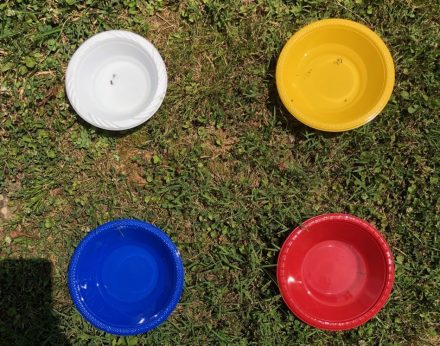The nine-day, virtual version of Elon Explorers was designed by Elon faculty, alumni, and undergraduates to boost scientific thinking and skills in Alamance-Burlington School System middle schoolers through synchronous and asynchronous experiments.
You’ll find science everywhere if you know how to look for it.
A group of Alamance-Burlington Schools middle school students are discovering science just beyond their doorsteps in the second year of the Elon Explorers camp. A collaboration among Associate Professor of Biology Jen Hamel, Associate Professor of Education Mark Enfield, and biology undergraduates and alumni, this year’s nine-day virtual camp features nature-based learning in biology and ecology.

“In general, we want to get them thinking about science in new ways,” Hamel said. “We want them asking: What is science? How does science work, and who does it? Is science creative? Is it collaborative? Where does science happen? Does it have to be in a lab?”
Enfield and Hamel adapted this year’s experience from last year’s five-day, in-person camp built around citizen science and collaboration. Alumni Emma Boniche ’17 G ’20, and Matt Sears ’18, and Jean Ross ’21 and Alana Evora created a website with lesson plans, activities, and videos to introduce campers to key concepts and questions.
“The concept is to target enthusiastic, talented students who may not have as many opportunities for enrichment experiences,” Enfield said.
Each morning, campers meet virtually with Hamel and Enfield for an introduction to the day’s topic. They ask questions, watch videos that prompt the day’s activities, and set off for independent research and data collection in their neighborhoods. The group meets again in the afternoon to share the data each collect in their field journals.
On Thursday, July 9, campers learned about the specialized relationships between predators and prey by examining spiders and spiderwebs. With a chart explaining different forms of webs — cobwebs, orbs, sheet webs and tunnel webs among them — campers set out to find as many as they could, look for the spiders that built them and identify the kinds of prey caught in those webs.

On Friday and Monday, they learned about pollinating insects and performed an experiment using different colored bowls filled with soapy water to see which colors attracted the most pollinators. They added their results together, and their combined work showed that yellow and white seemed to attract more flying insects.
“Getting them to go outside and put their hands and eyes on something real and connect with ecology topics will help them better learn the concepts,” Hamel said.
Another daily activity includes charting the growth of caterpillars fed different diets, averaging their weight gain, and charting those weights on graphs — mathematic skills essential to science and secondary education.
The goal is that campers leave Elon Explorers more confident in understanding what science is and thinking more like scientists themselves. Campers work through the scientific method, forming their own hypotheses, collecting observations and data, analyzing their findings, and reexamining their hypotheses to form conclusions.
Last summer, campers gave short presentations about what they’d learned about science. This year, those will take different forms, but Enfield wants the last day dedicated to empowering participants to express their knowledge.
“The key is that there are few opportunities for middle schoolers to stand up and say, ‘This is what I know,’” Enfield said.
The new virtual model — pairing synchronous and asynchronous learning with wraparound support in a nature-based curriculum — could become the basis for year-round programming and courses, Enfield and Hamel said.
“I love the idea that we can grow this during subsequent summers and during semesters, to involve Elon students in a semi-formal enrichment experience,” Hamel said.
The undergraduate and alumni team had to think critically in tailoring activities to those children could do by themselves in urban, suburban or rural environments.
“We all worked together to come up with activities and lesson plans that promote scientific thinking, behaving like scientist, and speaking like a scientist. We brought different techniques and perspectives,” Boniche said. “One of those perspectives was equity. I teach in a low-income area in Connecticut, so I was able to help with that, considering the resources and activities available to them.”
Participants were recruited through Alamance-Burlington Schools and Burlington Housing Authority. Each received a backpack of materials to complete activities, including a journal and art supplies they need for creative expressions of their learning.
“I hope this gets them more excited about science and biology and learning about the world around them,” Ross said. “Sometimes science can be daunting. At that age, I had a large interest in science and I wish I’d gotten more involved with it. I hope they find something that gets them excited and interested in learning.”



